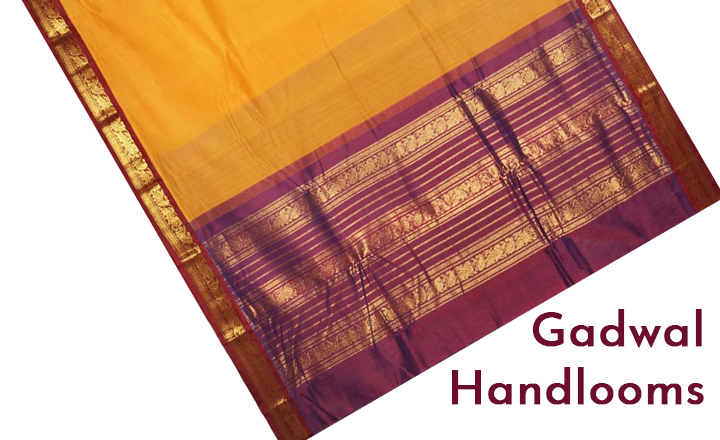Weaving Traditions of a Heritage Town

Handlooms that are rich and elegant are always admired while using them and wearing them is an age-old tradition. Despite the onslaught of modernity and western trends, still the Indian values and taste within us makes us look for handlooms, which give a wonderful ethnic flavour. Gadwal, in the state of Telangana is considered world famous for the handloom zari as well as cotton sarees. Gadwal Sarees are highly popular for many decades. The historic town is known for its characteristic cotton sarees that come with an attached silk border as well as silk pallu. The local weavers are highly skilled wherein more than 5 meters of saree fabric could be folded to fit into something as small a match box.
The materials used in manufacturing Gadwal handloom sarees are Silk / Cotton and Zari. The silk border is made of Tussar or mulberry and the body is made using unbleached cotton. Weavers also make pure silk models of Gadwal sarees. Gadwal handlooms are quite popular for the durability of the various colours that are used in the yarn. The mixture of these colours gives the durability. The count used in weaving technique results in the softness as well as the hardness of the fabric. The speciality of each and every thread used in Gadwal saree is that it is hand woven. For each saree, about 4-8 days of effort by two weavers is required.
The process of making a Gadwal Saree starts with the process of dyeing silk or cotton yarn. Dyeing is a colouring process achieved by dipping the yarns in boiled color water at a very high temperature. The colours are applied based on the specification by weavers and orders from customers. After drying the yarn in shade, it is then rolled over small sticks and finally converted to thread. The yarn is now loaded as warp into the loom for the actual process of weaving. Gadwal Sarees are woven traditionally according to the interlocked-weft technique (Kuppadam or Tippadam) or Kotakomma (also called as Kumbam) in terms of the border designs. Hence these are also known as Kotakomma or Kumbam sarees. This town which was once the capital of a local province during the era of dynasties with an impressive heritage and history also finds it name prominently among the handloom traditions of India.